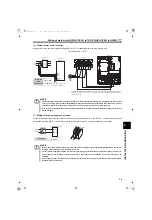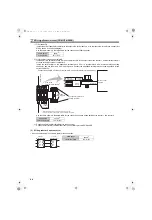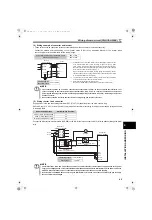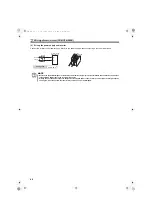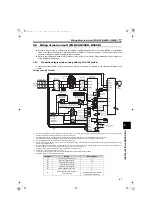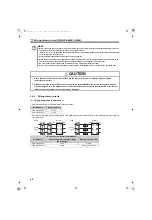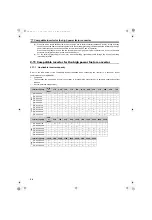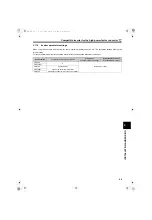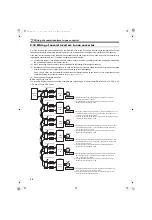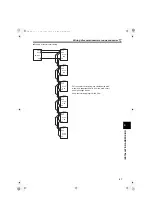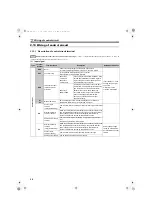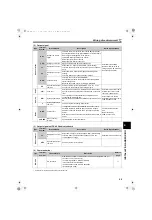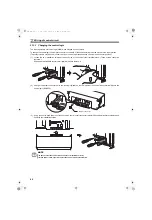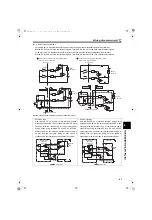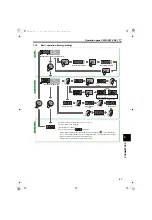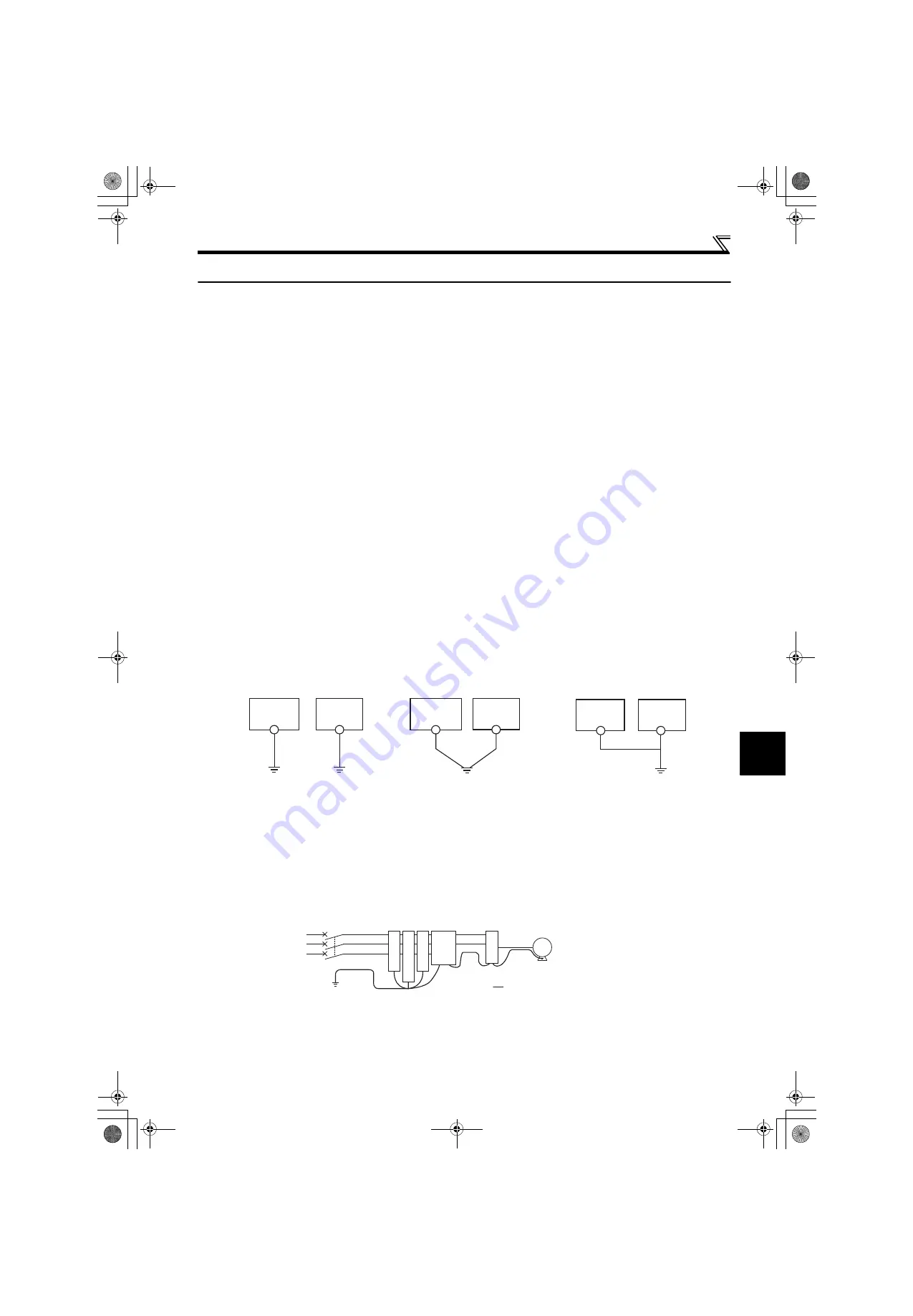
53
2
Notes on earthing (grounding)
2.10 Notes on earthing (grounding)
Always earth (ground) the converter with its accessories (reactor 1, reactor 2, outside box, filter capacitor).
(1) Purpose of earthing (grounding)
Generally, an electrical apparatus has an earth (ground) terminal, which must be connected to the ground before use.
An electrical circuit is usually insulated by an insulating material and encased. However, it is impossible to manufacture
an insulating material that can shut off a leakage current completely, and actually, a slight current flow into the case. The
purpose of earthing (grounding) the case of an electrical apparatus is to prevent operator from getting an electric shock
from this leakage current when touching it.
To avoid the influence of external noises, this earthing (grounding) is important to audio equipment, sensors, computers
and other apparatuses that handle low-level signals or operate very fast.
(2) Earthing (grounding) methods and earthing (grounding) work
As described previously, earthing (grounding) is roughly classified into an electrical shock prevention type and a noise-
influenced malfunction prevention type. Therefore, these two types should be clearly distinguished, and the following
work must be done to prevent the leakage current having the converter's high frequency components from entering the
malfunction prevention type earthing (grounding):
(a) Independently earth (ground) the converter with its accessories whenever possible. If independent earthing
(grounding) (l) is not available, use (ll) common earthing (grounding) in the figure below where the converter is
connected with the other equipment at an earthing (grounding) point.
Do not use the other equipment's earthing (grounding) cable to earth (ground) the converter as shown in (III).
A leakage current containing many high frequency components flows into the earthing (grounding) cables of the
converter with its accessories. Because of this, the converter must be earthed (grounded) separately from EMI-
sensitive devices.
In a high building, it may be effective to use the EMI prevention type earthing (grounding) connecting to an iron
structure frame, and electric shock prevention type earthing (grounding) with the independent earthing (grounding)
together.
(b) This converter must be earthed (grounded). Earthing (Grounding) must conform to the requirements of national and
local safety regulations and electrical codes. (NEC section 250, IEC 536 class 1 and other applicable standards).
(c) Use the thickest possible earth (ground) cable. The earth
(ground) cable size should be no less than the size
indicated in the table on
page 31
(d) The converter with its accessories should have their earthing (grounding) points as close as possible to them, and
their earthing (grounding) cables should be as short as possible.
(e) Run the earth (ground) cable as far away as possible from the I/O wiring of equipment sensitive to noises and run
them in parallel in the minimum distance.
(3) Earthing (grounding) of the reactor
(a) The reactor 1 and reactor 2 are usually earthed (grounded) by being mounted securely to the enclosure. If it cannot
be earthed (grounded) securely enough to the enclosure, remove varnish from a mounting hole and use that hole
and a cable to earth (ground).
(For the position of the varnish-removed mounting hole, refer to the outline dimensions.
)
(b) If the model is equipped with an earth (ground) terminal, wire the cable to that earth (ground) terminal. (Refer to the
outline dimensions for presence/absence of the earth (ground) terminal.
)
(c) The earthing (grounding) cable size of the reactors should be the same as that of the high power factor converter.
(Refer to page 31)
(4) Earthing (grounding) example
(a) Independently earth (ground) the converter with its accessories whenever possible.
(b) Wire the earthing (grounding) cable as close as possible to the input cable in parallel.
(c) Earth (ground) the high power factor converter with its accessory at one point. (Excluding when the reactors 1 and 2
are mounted on the enclosure surface.)
Converter
Other
equipment
(I) Independent earthing (grounding).......Good
(accessories)
Other
equipment
(II) Common earthing (grounding).......Good
Converter
(accessories)
Converter
Other
equipment
(III) Common earthing (grounding) cable .......Not allowed
(accessories)
(d)
(e)
(c)
(b)
(a)
: Earthing (grounding) cable
Power
supply
M
Motor
Inverter
Converter
Reactor 2
Reactor 1
Outside box
HC2.book 53 ページ 2012年11月19日 月曜日 午前10時52分

